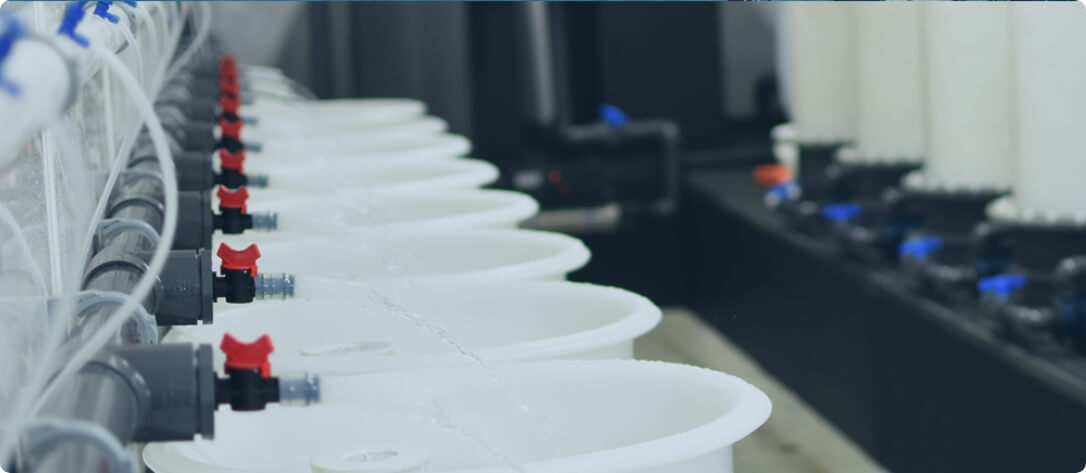
When starting a business in aquaculture, one of the first steps you need to take is a cost-benefit analysis of on land vs sea-based aquaculture.
In this analysis, as in any cost-benefit analysis, you will want to look at the entire expected cost and reward of each method. But in the blue economy, it is never as simple as deciding which option is the most profitable. The environmental costs and benefits are as, if not more, important, but much more challenging to quantify.
To help any budding entrepreneurs, here are is a snapshot of the elements I considered during this initial cost-benefit analysis.
The Advantages of Land-Based Aquaculture
The biggest benefit of land-based aquaculture is that you can choose your location. This means you can have your processing plant next to your facility, and you can build your facility next to your market, which lower both transportation and handling costs.
Additionally, being on land means you can easily access essential services, such as internet, electricity, food, and water. These services can be really costly to redirect to sea-based facilities.
On top of this, you can build your offices next to the facility which increases collaboration between different teams and reduces the risk of miscommunication.
Being on land also means people can go home every day, which means provides a better and more varied selection of potential employees. You can hire the best people, not just the ones who are happy to up and leave their lives for weeks at a time.
Lastly, land-based aquaculture is not subject to the whims of the weather. You can control the temperature and conditions of everything you do, and you're not subject to natural disasters, oil spills, or bad weather. In other words, land-based aquaculture is far more predictable than sea-based aquaculture.
The Disadvantages of Land-Based Aquaculture
However, each convenience comes with a cost. Land-based aquaculture is markedly more expensive than sea-based.
This is because in the sea you don't have energy or water costs. But on land you have to create a natural environment for the animals, which is costly for two main reasons. The technology is scarce and expensive, and there is a higher propensity for catastrophic loss because of the greater stock density.
And a rarely talked about disadvantage of land-based aquaculture is the lack of global expertise. Replicating the fish’s natural environment is challenging and requires specific experience, which is incredibly difficult to find considering that widespread commercial land-based aquaculture has only been around since the 90s.
Finding experienced staff is hands down the most challenging part of running a land-based aquaculture facility.
The Advantages of Sea-Based Aquaculture
In contrast, sea-based aquaculture is an established industry. That's its biggest selling point. All the technology is available off the shelf, which makes it relatively cheap and easy to start a small business.
Sea-based aquaculture has a lower CapEx meaning you can get started on a shoe string and get up and running pretty quickly. Although it will be an average of three years before you can start generating a profit, you have less money tied up, so less to risk, than with land-based aquaculture.
Another benefit of starting a business in an established industry is that it's far easier to hire for because there are more people who have relevant experience.
The Disadvantages of Sea-Based Aquaculture
Every disadvantage of sea-based aquaculture can be summarised in one sentence: you have no control at sea. In a tank you can filter the water; you can't do that at sea.
You have thousands of animals creating waste in a small area and no ability to clean it up. This creates negative environmental effects, such as the over-formation of algae.
Another really common problem that negatively affects the environment is escapees. Breeding fish isn't like breeding livestock. You can't build an enclosure and then catch escapees when the fence breaks. If your net has any weakness, fish will escape and if they aren't triploids, they will breed and reproduce. They may even become the dominant species and start killing off native species.
The disastrous effects of a handful of escapees have been seen time and time again. Only 30 years ago, a handful of lionfish escaped into Florida's waters. They have now colonized much of the seas between Rhode Island and Belize. In doing so, they have starved out many local fish species and majorly disrupted commercial fishing businesses.
And then there is the weather. The weather is one of the biggest enemies of sea-based aquaculture. It can create really unpleasant working conditions or prevent you from doing business altogether.
Choosing Between Land and Sea-Based Aquaculture
I went into aquaculture for two reasons: I wanted to help the ocean reverse the impact of climate change, and I wanted to ensure future generations could enjoy recreational fishing. It is these two fundamental reasons that lead my cost-benefit analysis, not the potential financial gains or losses.
So, the best advice I can give any entrepreneur who wants to start a business in aquaculture is: find your reasons, and make them central to your decision.

 Giles Cadman
Giles Cadman 

